Autumn comes to Puglia
The seamless change from summer into autumn happens almost without notice. September is a gentler, more temperate version of August. Gradually the shifts in light become more marked, the days grow shorter, and the beach becomes, once again, a peaceful retreat. Yet, it’s the arrival of autumn’s bounty that truly signals the end of summer.
We eagerly await the first appearance of autumn produce at the markets. Bitter greens, pumpkins, squash, and mushrooms—each bringing a new sense of warmth and comfort to our tables. Is it merely coincidence that as summer fades, our seasonal dishes grow heartier and more comforting?
Fave e cicoria
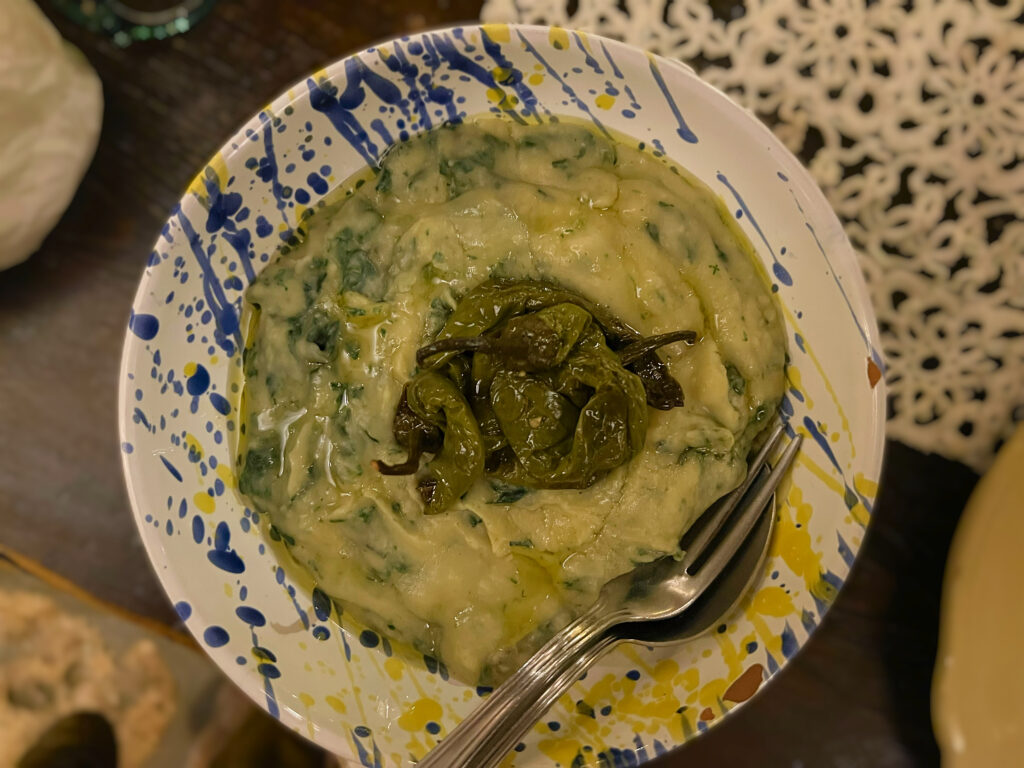
A broad bean purée made from dried broad beans and served with bitter, seasonal greens.
This dish, though born out of necessity and economy, remains a staple in Puglian cuisine. Fava beans, a cornerstone of Puglia’s cucina povera tradition, provided an important source of protein when meat was expensive and inaccessible to many. Today, you’ll find this dish on most restaurant menus that serve traditional Puglian cooking.
It is more than a nod to tradition: humble ingredients, simply cooked, combine to create a dish that is much more than the sum of its parts. The nutty, mashed potato-like texture of the beans contrasts with the silky bitterness of the greens. This is comfort food at its best, perfectly suited to autumn evenings.
At the heart of this dish is the “Carpino Bean,” named after its place of cultivation, Carpino in Gargano. Vicia faba major, rediscovered after near extinction in the 1990s, has become a Slow Food speciality. Cultivated in rotation with durum wheat, its annual production has grown to around 30,000 kilos—still far from the 900,000 kilos once produced.
Every 12th August, the “Carpino Bean” festival is celebrated, a key event in the Carpino calendar. The festival showcases two of the area’s star products: extra-virgin olive oil and fava beans. Stalls feature small-scale olive oil producers and home-cooked fava bean dishes, slow-cooked in pignate earthenware pots.
For this you will need:
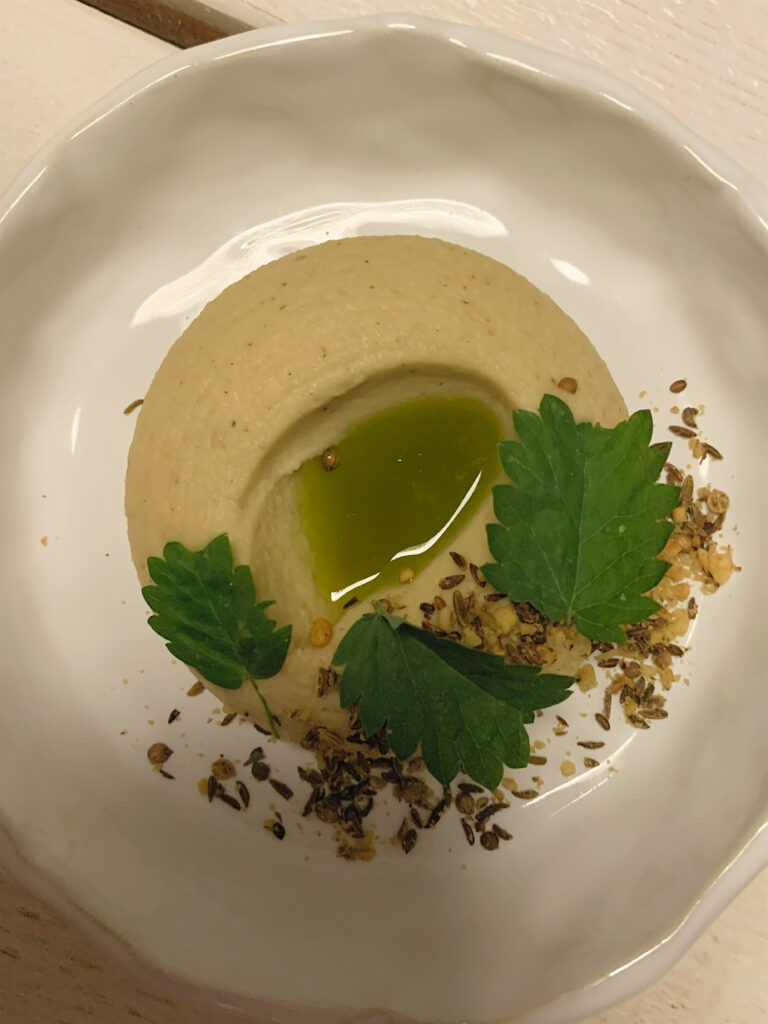
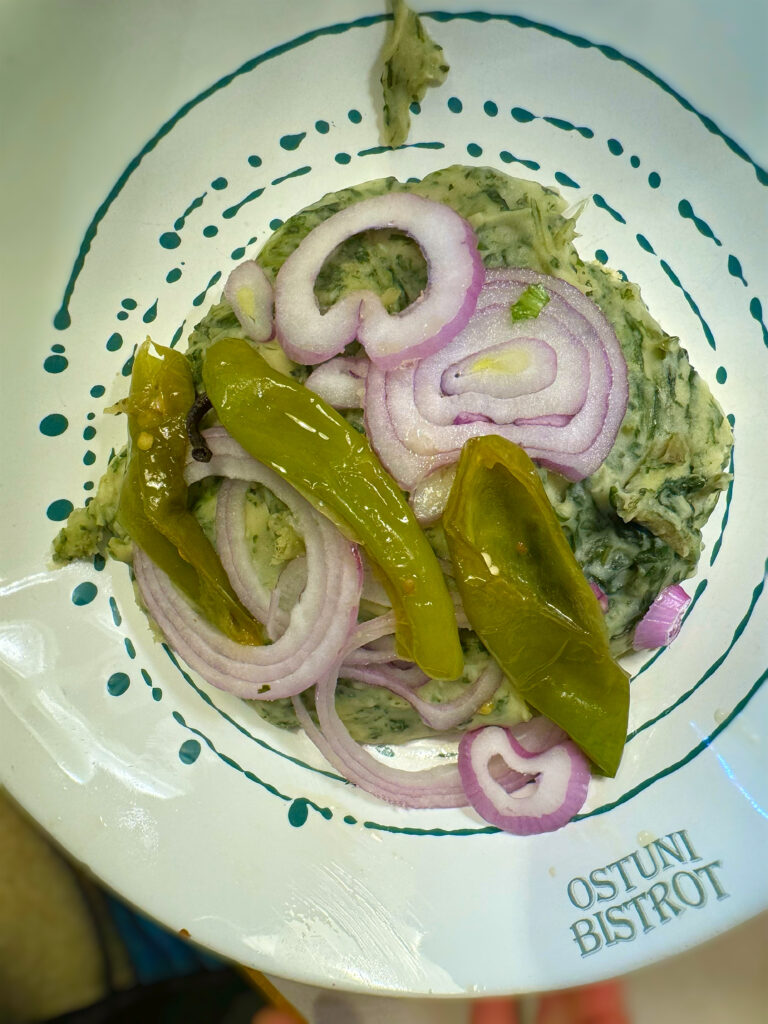
For the fava beans:
- 500g dried, peeled fava beans
- 2 cloves of garlic, crushed and peeled
- 1 large potato
- Extra virgin olive oil
- Salt and pepper
For the cicoria:
- A large head of cicoria (or 2 small heads), about 100g per person
- 2 cloves of garlic, chopped
- Salt and pepper
To finish the dish:
- Best-quality extra-virgin olive oil
Preparing the fava beans
- Soak the fava beans for at least 12 hours.
- Once soaked, drain the beans, rinse them well, and place them in a pot, covering them with cold water. Cook them over low heat, along with the crushed garlic and a washed, peeled, and diced potato, for about 1 hour and 30 minutes from the time the water starts boiling.
- In the meantime, wash and clean the cicoria. Boil them in salted water until fully tender (usually takes 8 – 12 minutes), then sauté them in a pan with a tablespoon of oil, crushed garlic, and a bit of chilli pepper.
- Once the beans are cooked, pour the mixture into a large bowl and “beat” (mix vigorously) with a wooden spoon, whisk, or electric mixer until it reaches a smooth, mashed potato consistency. Add a generous pour of olive oil to enrich the beans. Continue simmering, stirring constantly, until the beans form a thick purée. For a smoother texture, use an immersion blender.
- When the fava bean purée and vegetables are ready, plate by dividing the dish in half. On one side, place the fava bean purée; on the other, the vegetables. Drizzle generously with peppery, best-quality olive oil from Puglia.
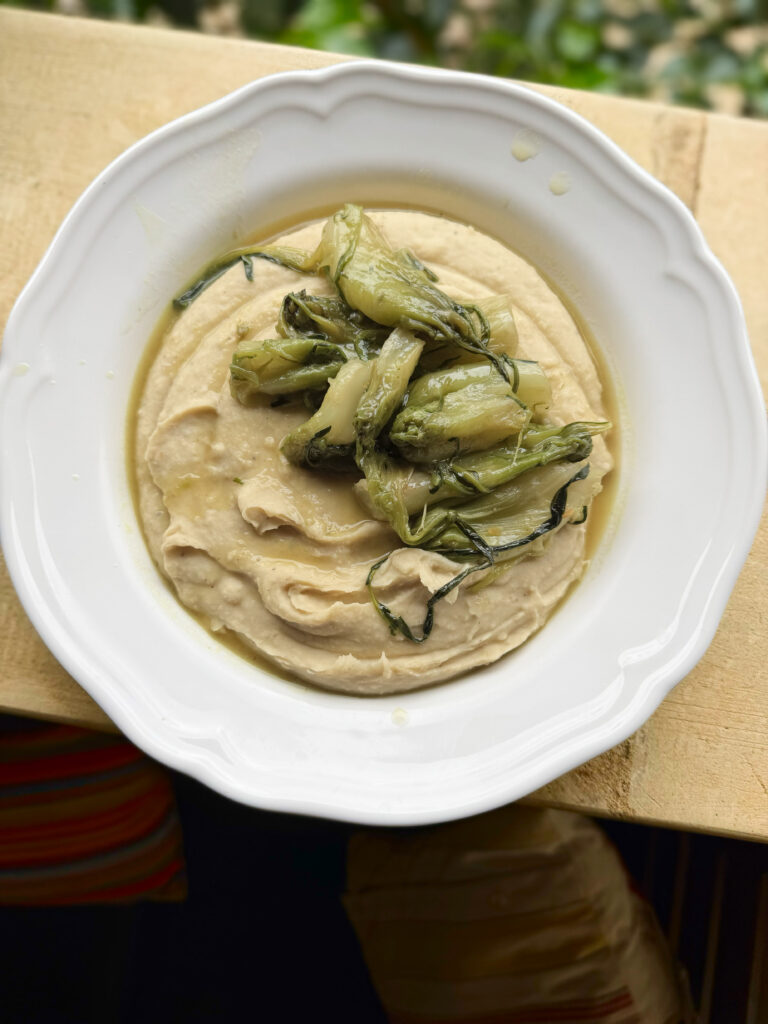
Practical advice
- During the cooking of the fava beans, if you have used too little water, add a few ladles of boiling water. If the mixture is too liquid, add some stale or toasted bread while “beating” the beans.
- This recipe can have variations depending on the availability of vegetables. In the summer, for instance, you can serve the fava bean purée with aubergines, peppers, or a mix of aubergine and tomatoes. You can also pair it with fresh figs, halved.
- For a twist, serve with friggitelli (small, sweet green peppers) often accompanied by “popped” tomatoes (pomodori scattarisciati). They are less bitter than the cicoria, the sweetness of the popped tomatoes providing balance.
- Use peeled fava beans if you can find them. If not, you will need to peel the beans after soaking. The skins should slide off easily.
- Some restaurants chop and mix the cicoria with the fava purée. Some garnish the dish with finely sliced Acquaviva onion (a milder red onion from Puglia).
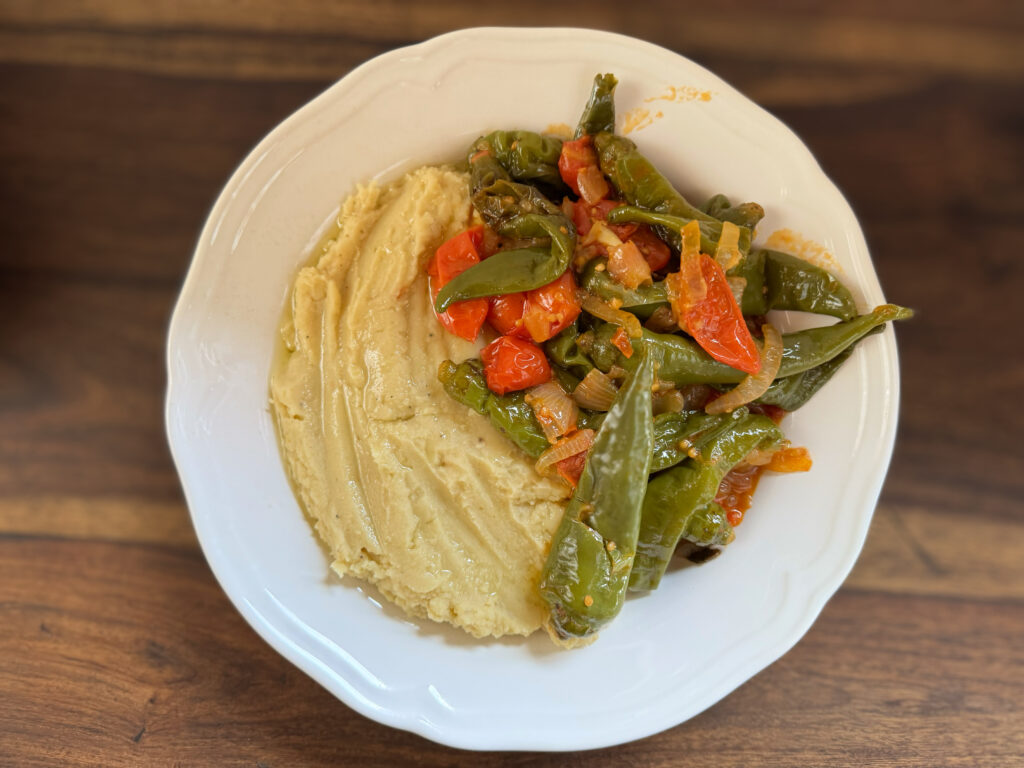
(serves 4-6).

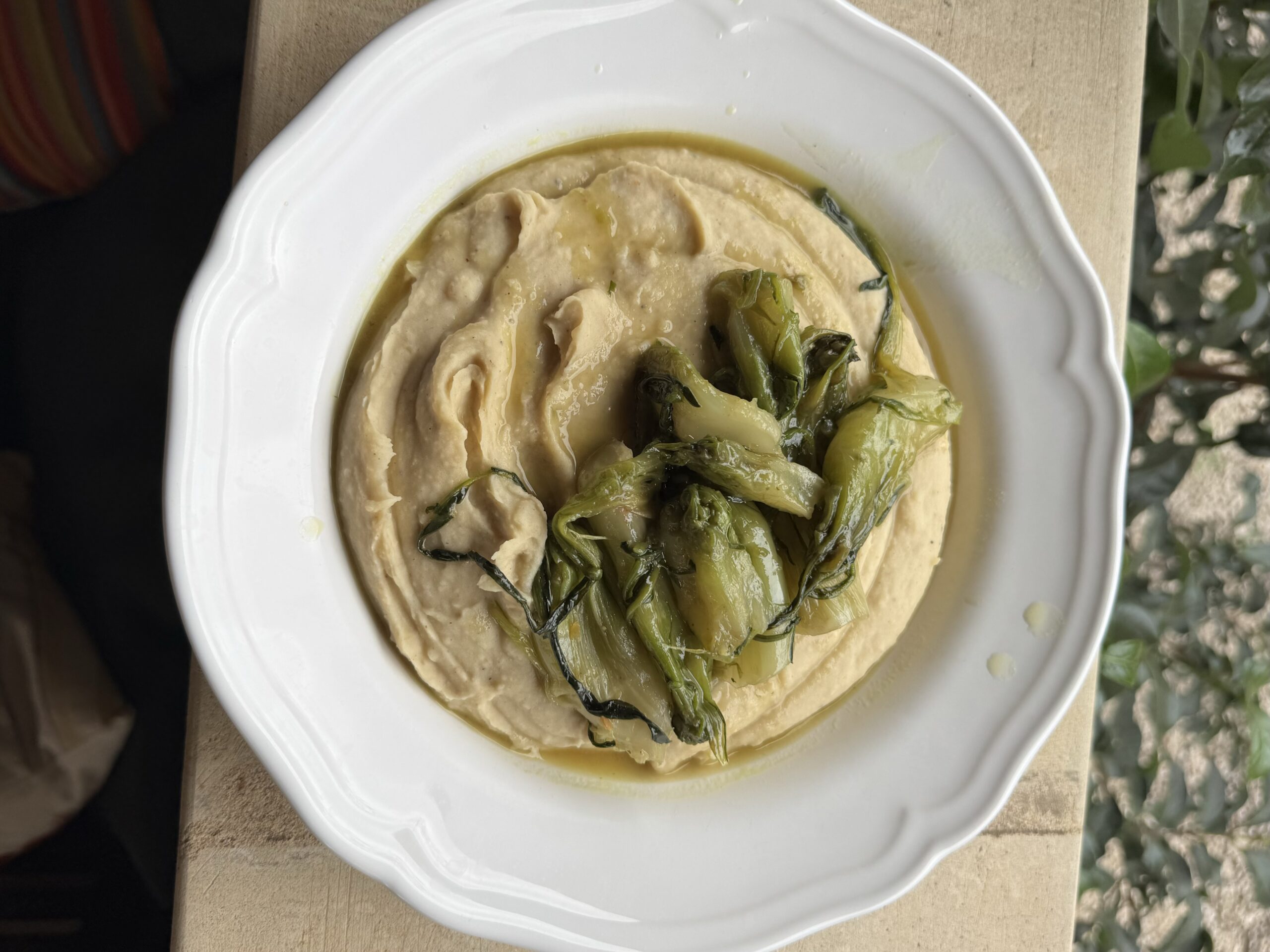


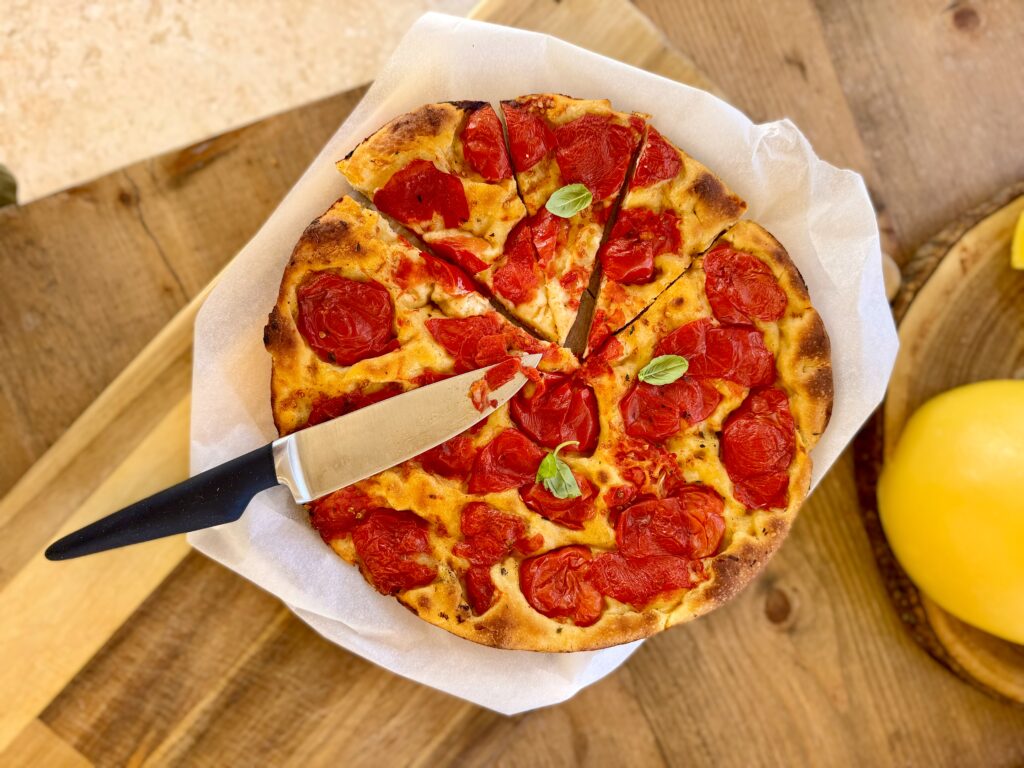
One Comment